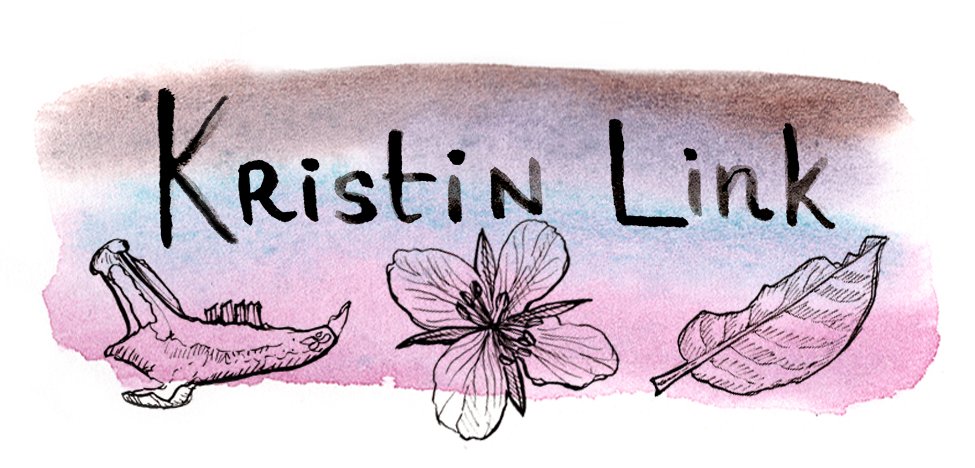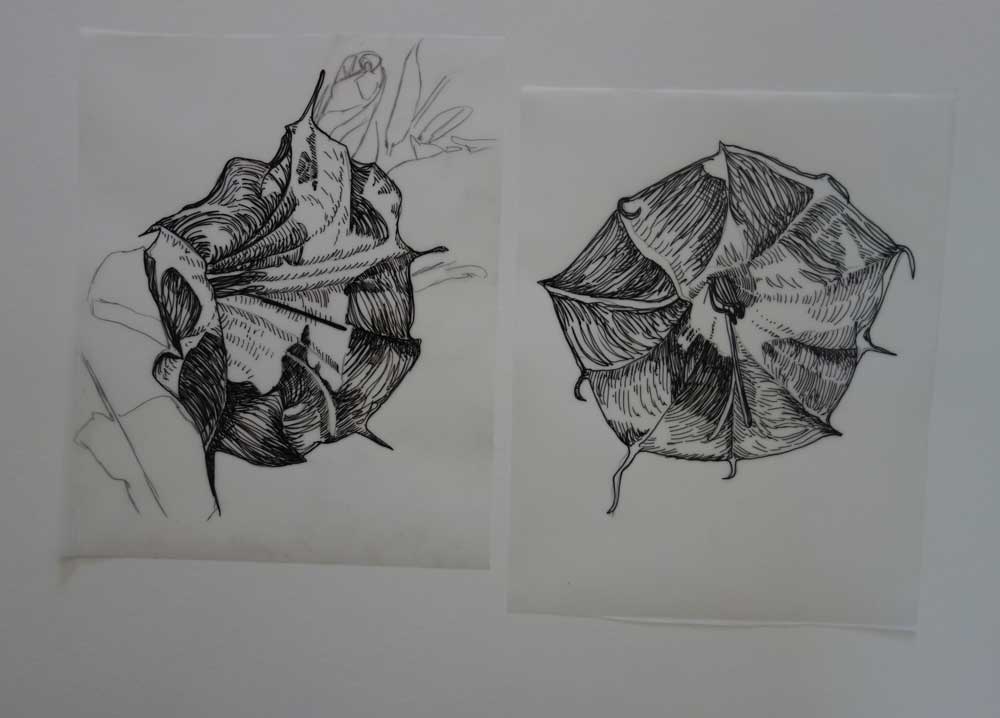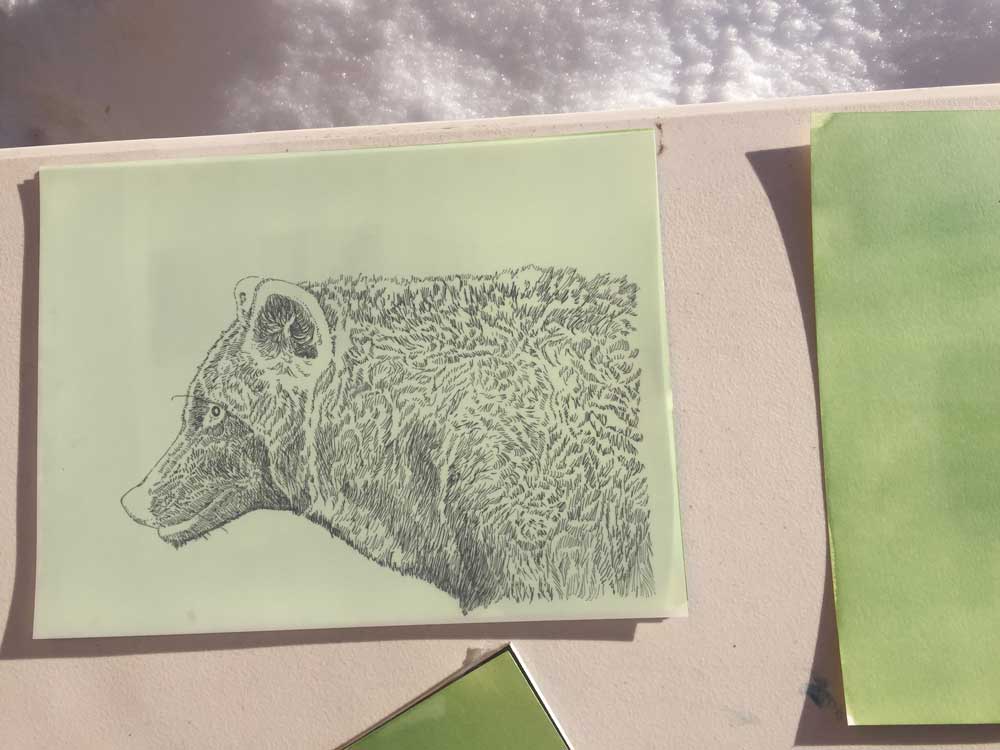“Cyanotype s a photographic printing process that produces a cyan-blue print. Engineers used the process well into the 20th century as a simple low-cost process that produces copies of drawings referred to as blueprints.” (According to wikipedia).
Like the engineers of the pre-digital age, I was also looking for a low-cost and relatively simple way to reproduce my drawings. I like the idea of blueprints because they still feel handmade and I can use the outside environment (sun and water) to make them. I’ve written several posts about how I started experimenting with cyanotypes during an artist residency with Joshua Tree National Park. In this post I wanted to focus more on the process I’ve been using.
My work always starts with the image (surprising I know!). I used to swear by drawing completely from life with the 3-D object in front of me. However after working as an illustrator, and coming to terms with wanting to draw things that aren’t in front of me, I have become more comfortable with working from my photographs. It’s been important for me to work only from my photographs because they are my experiences, and I can connect with my memories and feelings while drawing. Working from photographs also allows me to turn the image black and white, and then invert the values in Photoshop. I can work directly from a reference for a negative. When I make a print a black line in my drawing will be white in the final product.
Some drawings of pen on vellum, the "negatives" that I print from
A couple of weeks ago I wrote a post looking back on previous work and talked about the pleasure I find in the process of making these drawings. It is very satisfying and meditative. I could probably do it all night long. Once I have a stack of drawings to print from, I need papers treated with cyanotype solutions. These are easy to find online, as two parts that you mix together. The main trick is that the prints are exposed by sunlight, or UV light. I don’t have a darkroom, so I take over my house at night. I will dim all the lights in my cabin and get busy painting papers with the solution. Once they are dry I bury them under a pile of blankets in my loft and wait for the sun to come out.
Turning the cabin into a semi dark room
The hardest part of this work has been waiting for the weather. Since I was in the desert this fall, I wanted to keep making cyanotypes, but I’ve been waiting all winter for the return of the sun. In mid-January I couldn’t wait any longer and this is pretty much what I’ve been doing since then. I do like the limitations and using the environment to create my work. However my first Alaskan winter cyanotype efforts yielded poor results. A day would start sunny and then get cloudy, so my prints didn’t expose enough. Then it got cloudy and stormy for weeks.
Some cyanotype fails: trying to print on very delicate rice paper and an underexposed image. There were many more underexposed images, but they basically look like white paper.
Finally we got a week of glorious sunshine and I made a lot of prints. I found that I could place the papers flat on a table for 30-45 minutes for a good exposure. I read the voltage coming into our solar panels to get an idea of how strong the sunlight is. If I tilted the papers vertically I could reduce the exposure time, but I’ve come to appreciate the effects of printing flat.
Sometimes I will print with a piece of glass on top to get a (usually) uniform and crisp image. However if I just lay the vellum on top of the paper (and hope a gust of wind doesn’t come), then sometimes the image will be sharp in places and blurry in others. I find the variation in the end result addictive and intriguing.
A somewhat blurry and a crisp print
The last part of the process for creating the prints is to wash them off. I use the same spring water that we drink, cook, wash, and live off of, which we haul by the five-gallon bucket from the Nizina River. I’ve been advised that the mineral content in the water can have an effect on the process, but I think I’m going to claim that as another environmental effect that I will work with. Washing the prints off to see the final image is really like magic.
The magic happening! Rinsing the exposed print and seeing what was created...
Once the prints are dry the possibilities are pretty much endless. I can leave them as they are, tone them (which I haven’t tried because I’m in love with that blue), lighten them in places, collage them, or draw and paint on top of them. I’m sure I can do more things to them, but I’m just starting with that list. Right now I’ve been drawing and painting on a few with gouache and colored pencil. I’m drawn to the idea of having multiple forms, some that are ghostly blueprints, and some that are solid but made from the same substance. Probably just like engineers of the pre-digital age I find it enormously freeing to be able to work with multiple drawings of the same image. Unlike those engineers I also really enjoy playing with the process and the slight variations I get between those reproductions.
Wolves. Both are 9 x 12" The left image is a print with gouache and colored pencil. The right image is the plain print.
I want to thank Luke McKinney for talking over my work with me one afternoon and J Jason Lazarus for advice on the cyanotype process. Both of them do beautiful work so check out their websites linked to their names.
Also I plan to post some of my prints up for sale in my Etsy shop in early March. In the meantime if you are interested in purchasing any of these prints sent me a message or e-mail.















